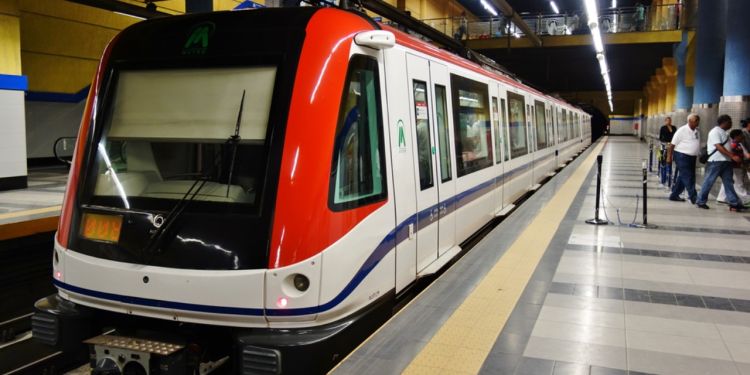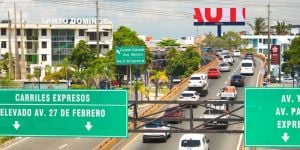
Wondering about the means of transportation available in the Dominican Republic? Find an overview of the country's transport network in this article.
Once you have settled in the Dominican Republic (DR), getting around will be part of your everyday life, but this should not be a major issue as the country hosts a wide transport network consisting of different means of transport. All of the public transport in the Dominican Republic is quite affordable, so it is not expensive to travel around the country.
Rent a car in the DR
You can rent a car if you prefer to travel more comfortably, alone or with your family, provided you have a valid driver's license. Your foreign license is only valid for 30 days in the country, so if you are living in the Dominican Republic, you will need a Dominican driver's license. In order to obtain that, you need to have residency and a Dominican identity card or cedula. However, car rental can be very expensive, and compulsory insurance is also expensive.
Metro in the DR
In Santo Domingo, you can access the main office buildings, universities, or commercial areas by the train system, which is very practical and is called the metro. There are two main lines, and they are always being extended.
Inter-city coaches in the DR
The country is also served by an extensive coach network, which is operated by several coach companies, the main ones being Metro and Caribe Tours. In general, Dominican coaches are clean and comfortable, although they tend to blast the air conditioning, so you might want to bring a sweater. They have reclining seats, a toilet on board, and a television. The prices are very reasonable, rarely reaching US$10, even for long journeys. Metro covers from North to South, as does Caribe, but the latter also travels to the West, even into Haiti and into the northeast, the Samaná peninsula.
There is also another company called the Bávaro Express, which travels from Punta Cana and Bávaro in the East to the capital, Santo Domingo, and there are more coach companies in Santiago that also go to Santo Domingo, such as Transporte Espinal.
Local buses in the DR
Local buses are called guaguas, and they have occasional or no air conditioning. They stop wherever passengers wish to stop, and you can get on wherever you like, as there are officially no bus stops. The conductor is called the cobrador and he hangs off the outside of the doorway looking for people who want to get on board. If he sees you walking up the road towards the bus, he will call for the driver to stop it and run towards you to help you carry your bags onto the bus. If you have a large bag that takes up a seat, you have to pay for the extra seat for the bag. Fares are around a dollar for short distances but can go up to US$3 or US$4 for journeys of over an hour. Everyone is very friendly on the guaguas; they all say good morning or good afternoon when they board, music is usually playing, people share food, chat, and sing along to the music. You may also occasionally find yourself sitting next to a chicken or a duck.
Taxis in the DR
You can find taxis in most Dominican cities, and while more expensive than guaguas, the rates are around USD 5 for short journeys and USD 8 for longer ones. Uber is currently in the country, in Santo Domingo, Santiago, Puerto Plata, and most places in villages.
There are also public shared taxis called publicos, or conchos, and they travel set routes, picking up and letting people off anywhere along the route. They are very affordable, usually around US$ 1, but can get very cramped inside. The cars are usually old, and there are four people in the rear seat and two in the front passenger seat. You can have a little more space by paying for two places. Publicos tend to be old cars, usually with cracked windscreens, doors that won't open, and rust everywhere.
Motorcycle taxis in the DR
You can also hire a motorcycle taxi, known as a motoconcho. They are fast and convenient and are always available where the buses or guaguas let a lot of people off, leading to a great integrated transport system. The prices are usually less than a dollar, but it is not necessarily the safest way to travel, and you need to be careful getting on and off so that you do not burn your leg on the exhaust pipe. This happens frequently and is known as a Dominican tattoo!
Planes in the DR
Domestic flights are available from many of the airports, including La Isabela in Santo Domingo, El Portillo in Las Terrenas, Arroyo Barril in Samana, and Punta Cana and Santiago airports. They fly to different airports around the country as well as into Haiti.
Airport transfers in the DR
There are very strong transport/taxi unions, and there is no public transport allowed at any of the airports in the country. You have to take a taxi to connect with public transport, arrange an airport transfer, or walk a long way (usually) to the main road to connect with public transport. There are fixed rates for airport taxis, but you can sometimes save money by going to the Departures area and negotiating with a taxi driver who has just dropped someone off.
Useful links:
Dominican Republic Tourism website
Metro coaches
Transporte Espinal
Bávaro Express
Airport pick-up taxi
We do our best to provide accurate and up to date information. However, if you have noticed any inaccuracies in this article, please let us know in the comments section below.












Comments